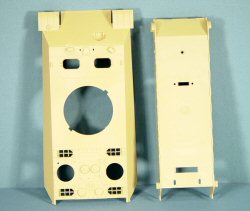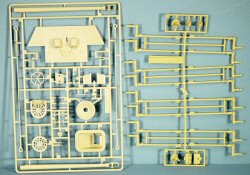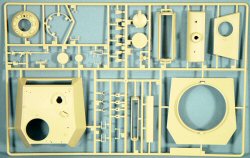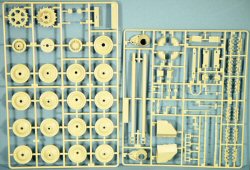Academy 1/25 Panther G | 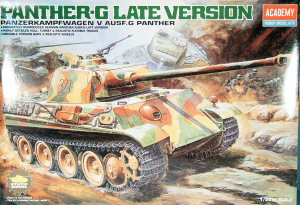 | Background The Panther tank was designed to counter the threat posed by the new generation of Soviet heavy tanks, primarily the T-34/76. It was a captured T-34 that German designers studied in order to develop the new concept that would become the Panther. Unlike the preceding panzers that helped to conquer much of Europe and North Africa, the Panther featured a sloped armor and a 75mm main gun. Due to the increased thickness of the armor, the engine and transmission were upgraded to deal with the greater weight. While the Panther did increase the effectiveness of German armor on the eastern front. It was too little too late. Nevertheless, the Panther did play havoc with the Shermans on the western and southern fronts. To make matters worse, a number of Panthers were given a makeover to make them appear to be M10 tank destroyers. These Ersatz M10s were initially effective in infiltrating allied lines and causing havoc before being ‘terminated’. By the end of the war, over 3,700 Panther Ausf. G were produced. The Panther is recognized by many as the best tank produced during the war. The Kit The Academy release of the Panther Ausf G may actually described as a re-release. The molded-on markings on the bottom of the hull indicate that this kit was produced in 1986 and the holes on the bottom of the hull betray its previous remote-control/motorized life. I am not aware of how much of this kit is new-tooling, if any, but it is nevertheless nicely done. Molded in brown styrene, the kit features nicely molded details including the engine fan shrouds on the engine deck. If these are older molds, you’d never know it examining the parts. There is no hint of flash nor obnoxious mold lines that are typical of older and/or tired molds. While I am not a German armor expert by any stretch of the imagination, comparisons of this kit with photographs in my Concord Publications ‘Panther’ and Kagero’s ‘Panther Ausf. A/G’ reveal that this kit very close if not completely accurate. The one downside of this kit is that it is devoid of an interior. The fan shrouds will have to be blanked off from the inside if you want to keep pesky IPMS types from trying to critique your interior. 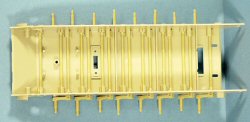 Another artifact of this tank’s motorized days is the working suspension. The torsion arms are molded in a flexible plastic and, once installed in the hull, flex nicely. The track is a bionic version of standard rubber band track, but unlike their Tamiya counterparts, these come in sections, feature some beautiful detail and are pinned together over the road wheels using steel pins. This means that maintenance of the model will be easier in the likely event that the model experiences kid or cat encounter. Another artifact of this tank’s motorized days is the working suspension. The torsion arms are molded in a flexible plastic and, once installed in the hull, flex nicely. The track is a bionic version of standard rubber band track, but unlike their Tamiya counterparts, these come in sections, feature some beautiful detail and are pinned together over the road wheels using steel pins. This means that maintenance of the model will be easier in the likely event that the model experiences kid or cat encounter.
Assembly of the kit is very easy and in fact it had been my intention to make this article a full-build review. While I did get the lower hull completed, my ‘day job’ has kept me out of town and therefore away from the workbench. I’ll have this project built up for November’s issue and I’ll also be trying out something new – using Aves’ two-part epoxy putty for Zimmeritt. Conclusions While this kit may be based on an older release, this model has withstood the test of time nicely. In a scale as 1/25th, it would be far easier for a modeler to scratch build an interior for this model and open everything up. If you have other 1/25th scale tanks on your shelf such as the Tamiya Centurion or T-34, this will make a nice addition at a very reasonable price. If not, this is a great starter in the 1/25th scale series. My sincere thanks to MRC for this review sample! | 








|

